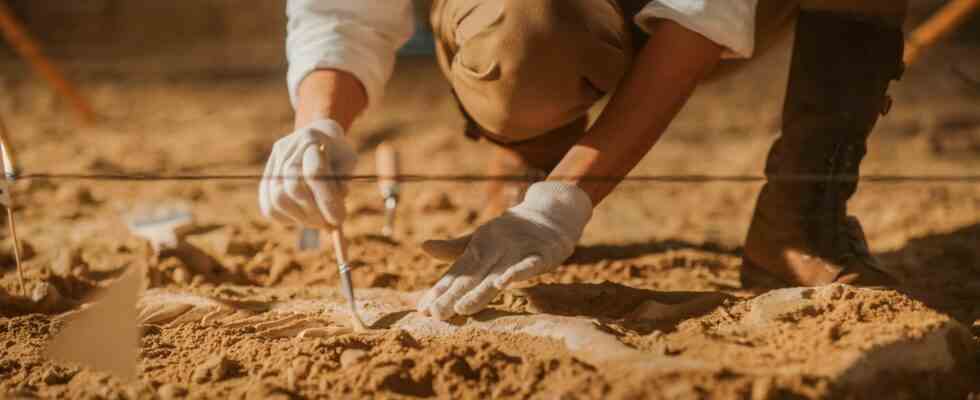archeology
Extraordinary find: Dog skeletons more than 4000 years old discovered in Saxony-Anhalt
A motorway will soon lead to the place where the dog skeletons were found (symbol image)
© gorodenkoff / Getty Images
During an archaeological excavation, a tomb with dog skeletons from the Corded Ware culture was discovered. It is said to be a ritual sacrificial site that points to the special appreciation of the animals.
Archaeologists do not often see this: three dog skeletons lie lovingly draped next to each other in a grave. The animals are said to have been buried more than 4000 years ago in what is now Friedrichsschwerz in Saxony-Anhalt, as reported by National Geographic. The dog skeletons were discovered during an emergency or causal excavation. These were archaeological investigations, which are carried out before larger construction projects – such as the construction of the A143 motorway here.
The position of the skeletons therefore indicates a kind of ritual sacrifice. “If you go back thousands of years to cultures where we did more research into this phenomenon, you can see that people paid homage to the gods by bringing down women and children or cattle in this way,” says Dr. Susanne Friedrich, Head of the Department for Archaeological Preservation in the State Office of Saxony-Anhalt.
Behind offerings lies the appreciation of those societies
According to Friedrich, the dog skeletons come from the Corded Ware culture, which spread from western Russia through Germany to the western Netherlands. The culture is named for its distinctive vessel decoration, which involves indenting patterns of grooves in clay with a string. The Corded Ware culture is around 2800 to 2200 BC. dated.
From older cultures that have been better researched, it is clear that those who were regarded as particularly important to society were the ones who were sacrificed. “Young women and children are a great guarantee for the continued existence of society. We recognized that this was why they were sacrificed, especially in the culture of the fourth millennium BC,” says Friedrich.

Skeletons could be from earlier herding dogs
Therefore, the ritual burial of the dogs speaks for a certain appreciation. “In the period of the Corded Ware culture, meadow landscapes became more and more important – we can see that from the botanical remains,” says Friedrich. The dog could therefore have been used and valued more and more as a herding dog at this time. But what exactly Further finds of this kind can show what is behind the grave and the animal skeletons.”Each new excavation site can change the knowledge that we have,” says Friedrich captures the story well.”
source: National Geographic


